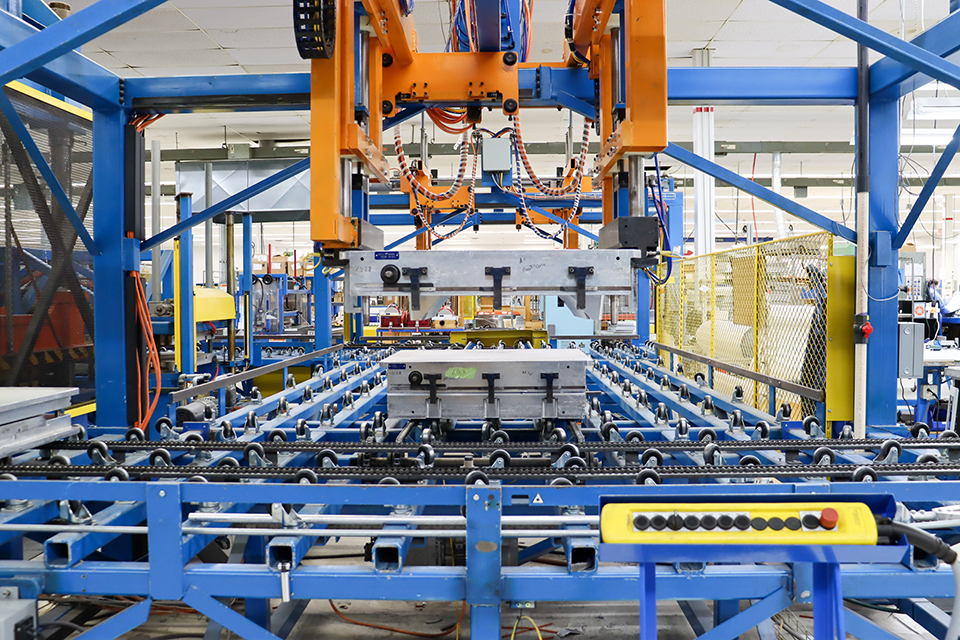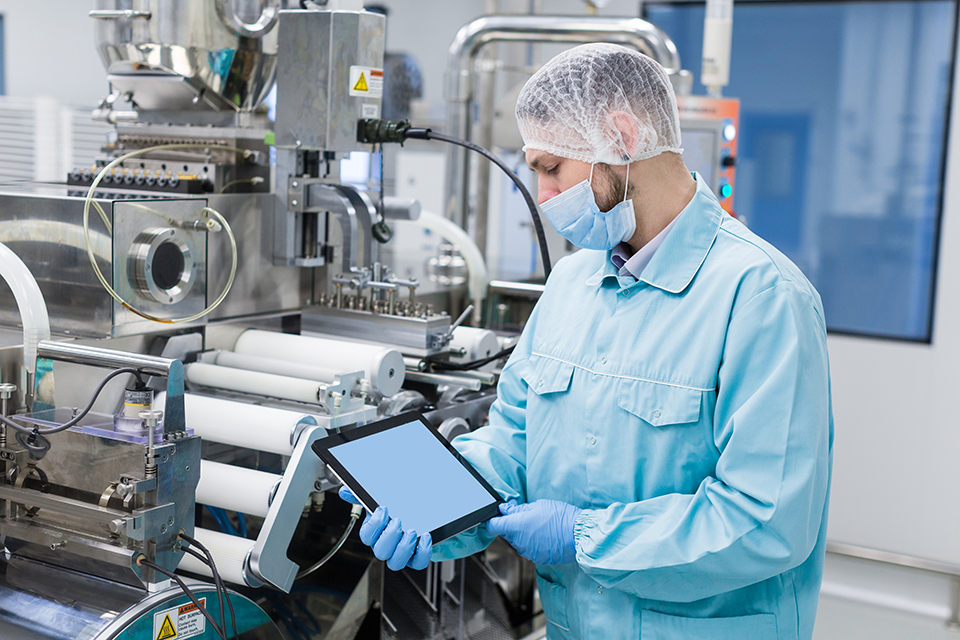A Complete Guide to Outsourcing Compression Molding
Compression molding is a critical process in manufacturing durable, high-quality components used in various industries, including medical devices....
4 min read
Domico Med-Device May 30, 2024
Discover the intricate process of EVA compression molding and its importance in the medical device manufacturing industry. Compression molded patient positioning parts, orthopedic supports and braces, and MRI Coils are a few of the many parts that utilize the compression molding process.
EVA compression molding is a widely used manufacturing process in the medical device industry. It involves the use of Ethylene Vinyl Acetate (EVA), a copolymer material known for its excellent properties such as flexibility, durability, and resistance to chemicals and UV radiation.
The process is used to create a variety of medical devices, including orthopedic insoles, prosthetic components, and cushioning materials. EVA compression molding allows for precise control over the shape, size, and density of the final product, making it an ideal choice for medical device manufacturing.
The EVA compression molding process is simple and includes the following 6 steps:
1. Preparing the mold: The mold is cleaned and prepped before the molding process begins. Any residue or contaminants are removed to ensure the final product is of high quality.
2. Loading the EVA sheets: The EVA sheets are loaded into the mold.
3. Heating the EVA sheets: The mold is then transferred to a heated platen press that heats the EVA sheets to a specific temperature, allowing the foam to melt and become moldable.
4. Compression molding: The heated EVA material is compressed under high pressure within the mold. This pressure ensures that the material takes the shape of the mold and fills all the intricate details.
5. Cooling: After the compression molding process is complete, the mold is cooled down to solidify the EVA material.
6. Ejecting the molded product: Once the EVA material has cooled and solidified, the mold is opened, and the final product is ejected.
By following these steps, manufacturers can achieve precise and consistent results in the EVA compression molding process. This precision ensures that each molded product meets the exact specifications required for medical devices, guaranteeing a high level of accuracy and quality control throughout the manufacturing process. Consistency in the shape, size, and density of the final product is crucial in the medical industry, where precision and reliability are paramount. By adhering to these steps diligently, manufacturers can produce medical devices that not only meet strict regulatory standards but also deliver optimal performance and functionality for healthcare professionals and patients alike. The meticulous attention to detail in the EVA compression molding process ultimately results in durable, customizable, and cost-effective medical devices that enhance patient care and safety.
EVA compression molding offers several benefits in the medical device manufacturing industry:
1. Cleanability: The fluid-resistant and cleanable properties of the superficial layer created by compression molding foam make it easy to maintain and sanitize medical devices. This is especially crucial in healthcare settings where cleanliness and hygiene are paramount. The durable nature of the foam ensures that the medical devices can withstand frequent cleaning and sterilization processes without compromising their integrity or performance. Overall, the combination of these properties makes compression molding foam an ideal choice for medical devices that require regular cleaning and maintenance to ensure patient safety and product longevity.
2. Customization: Compression molding enables the creation of intricate and customized designs tailored to a wide range of applications. This process allows manufacturers to not only produce unique shapes and sizes but also to incorporate specific features and functionalities into the final product. Whether it's designing orthopedic insoles with precise arch support or crafting prosthetic components with intricate details for a perfect fit, compression molding offers endless possibilities for customization in the medical device industry. By leveraging the versatility of compression molding, manufacturers can meet the diverse needs of healthcare professionals and patients alike, ensuring that each medical device is tailored to deliver optimal performance and comfort.
3. Versatility: Compression molding foam offers a versatile approach to creating innovative composite materials. By incorporating closed cell foam, dual density foams, pressure-sensitive adhesives, Health Care Fabric, and other materials, a diverse range of products can be crafted to cater to various medical applications with precision and efficiency.
4. Cost-effectiveness: EVA compression molding is a cost-effective manufacturing process that not only allows for the efficient production of patient interfacing devices but also contributes to the overall affordability and accessibility of essential medical equipment. By utilizing this method, manufacturers can streamline their production processes, optimize material usage, and minimize waste, ultimately resulting in cost savings that can be passed on to healthcare facilities and patients. This cost-effectiveness is particularly significant in the healthcare industry, where budget constraints and resource management are critical factors in ensuring the availability of high-quality medical devices for patient care. Through the utilization of EVA compression molding, manufacturers can uphold standards of affordability without compromising on the quality or performance of the final products, making essential medical equipment more accessible to those in need.
5. Consistency: The process ensures consistency in the shape, size, and density of the final product, reducing the risk of variability and ensuring reliable performance. This meticulous attention to detail not only guarantees that each medical device meets the exact specifications required for optimal functionality but also instills confidence in healthcare professionals and patients alike. By maintaining uniformity in the manufacturing process, EVA compression molding ensures that every product is of the highest quality, adhering to strict regulatory standards and delivering consistent results that healthcare providers can rely on. This commitment to precision and reliability ultimately translates to enhanced patient care, safety, and satisfaction, making EVA compression molding an indispensable technique in the production of top-tier medical devices.
6. Durability: In addition to its durability and resistance to wear, Ethylene Vinyl Acetate (EVA) offers exceptional shock absorption properties, making it an ideal material for medical devices that are subjected to constant pressure and impact. This feature is particularly crucial in patient positioning, where the EVA material can effectively cushion and protect sensitive areas while providing optimal support and comfort. Moreover, EVA's ability to maintain its structural integrity even under repetitive stress ensures the longevity and reliability of medical devices, guaranteeing consistent performance and durability over time. With EVA's impressive combination of durability, wear resistance, and shock absorption, it stands as a reliable and versatile material choice for a wide range of medical applications.
With these benefits, EVA compression molding plays a crucial role in the production of high-quality and reliable medical devices.

Compression molding is a critical process in manufacturing durable, high-quality components used in various industries, including medical devices....

The manufacturing of medical devices is a complex and highly regulated process that demands precision, reliability, and adherence to strict quality...

From understanding your specific needs to evaluating the manufacturer's reputation, we will cover all the essential tips and factors to consider...